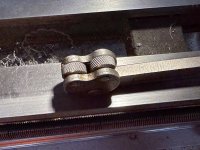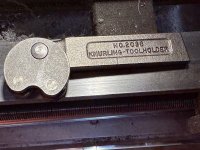Michael Kellough
Member
A friend/co-worker does decorative finishes on all kinds of stuff and has to replicate a missing part of an antique frame. On the flat lands of both sides of the raised part of a chair molding like profile there is running kind of checkerboard pattern that he thinks was made with a tool like this.
[attachimg=1]
At first I thought he could just buy a knurling tool but then realized that this tool has been knurled itself. The areas in between the diagonal lines are concave rather than convex.
I have a wood lathe. Is this so I could do to brass rod on my lathe or do I need to find someone with a metal working lathe?
The wheel is only 1/4” wide.
[attachimg=1]
At first I thought he could just buy a knurling tool but then realized that this tool has been knurled itself. The areas in between the diagonal lines are concave rather than convex.
I have a wood lathe. Is this so I could do to brass rod on my lathe or do I need to find someone with a metal working lathe?
The wheel is only 1/4” wide.



